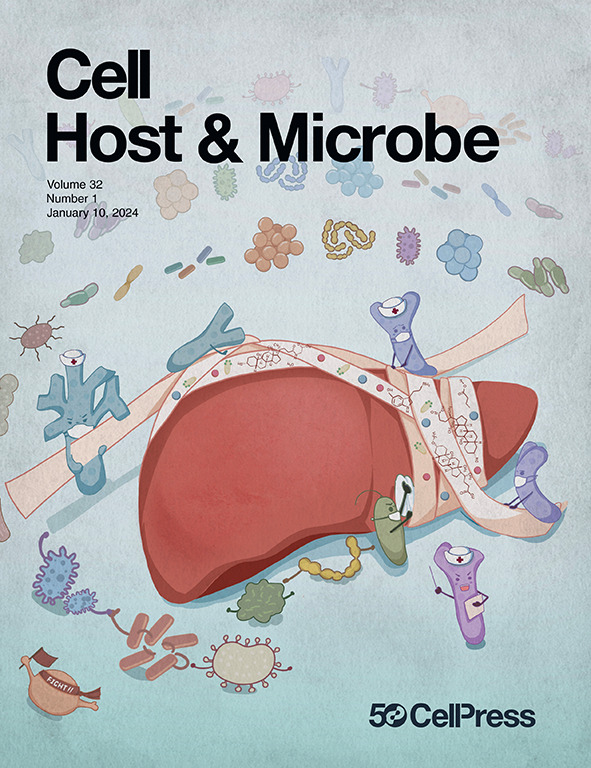将大肠杆菌与克罗恩病纤维化联系起来
IF 20.6
1区 医学
Q1 MICROBIOLOGY
引用次数: 0
摘要
与克罗恩病相关的肠纤维化是一种严重但尚不清楚的临床并发症。在本期《细胞宿主》杂志中;微生物,Ahn及其同事提供的证据表明,粘附的肠道大肠杆菌产生金属蛋白yersinabactin,它以hif -1α-依赖的方式隔离锌,从而驱动肠道纤维化。本文章由计算机程序翻译,如有差异,请以英文原文为准。
Linking E. coli to fibrosis in Crohn’s disease
Intestinal fibrosis associated with Crohn’s disease is a serious yet poorly understood clinical complication. In this issue of Cell Host & Microbe, Ahn and colleagues provide evidence that the adherent intestinal E. coli produced the metallophore yersiniabactin, which sequesters zinc to drive intestinal fibrosis in a HIF-1α-dependent manner.
求助全文
通过发布文献求助,成功后即可免费获取论文全文。
去求助
来源期刊

Cell host & microbe
生物-微生物学
CiteScore
45.10
自引率
1.70%
发文量
201
审稿时长
4-8 weeks
期刊介绍:
Cell Host & Microbe is a scientific journal that was launched in March 2007. The journal aims to provide a platform for scientists to exchange ideas and concepts related to the study of microbes and their interaction with host organisms at a molecular, cellular, and immune level. It publishes novel findings on a wide range of microorganisms including bacteria, fungi, parasites, and viruses. The journal focuses on the interface between the microbe and its host, whether the host is a vertebrate, invertebrate, or plant, and whether the microbe is pathogenic, non-pathogenic, or commensal. The integrated study of microbes and their interactions with each other, their host, and the cellular environment they inhabit is a unifying theme of the journal. The published work in Cell Host & Microbe is expected to be of exceptional significance within its field and also of interest to researchers in other areas. In addition to primary research articles, the journal features expert analysis, commentary, and reviews on current topics of interest in the field.
 求助内容:
求助内容: 应助结果提醒方式:
应助结果提醒方式:


